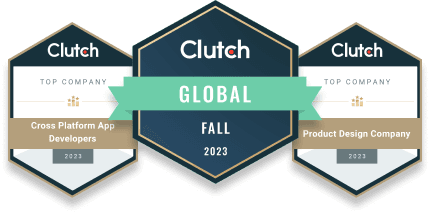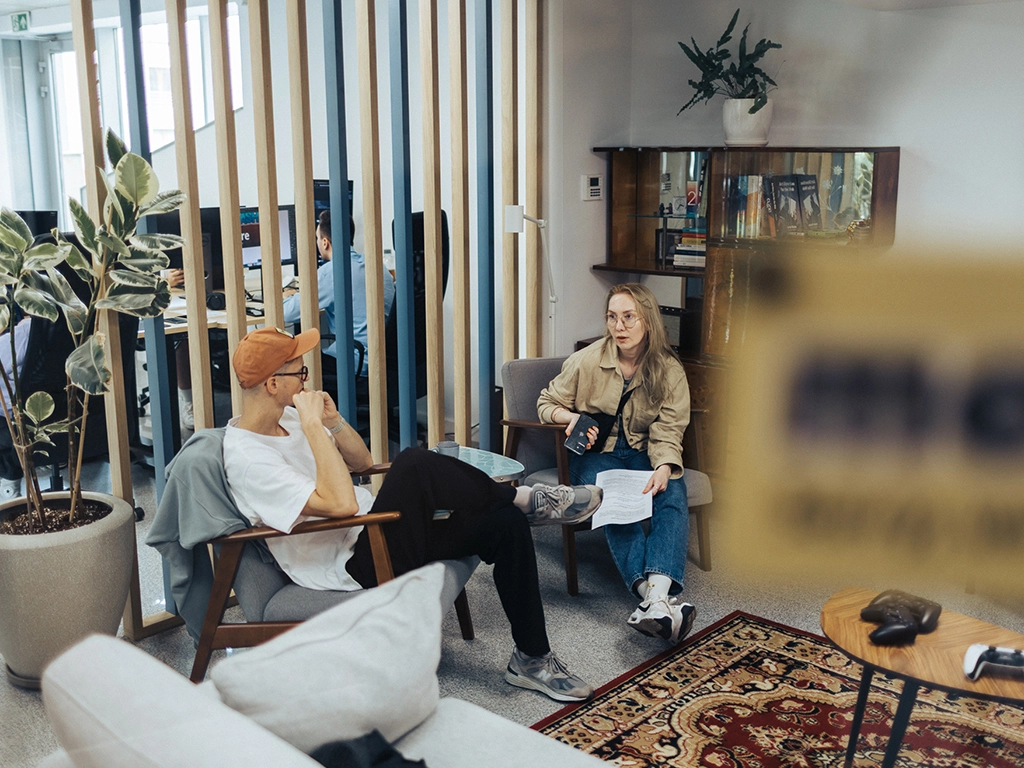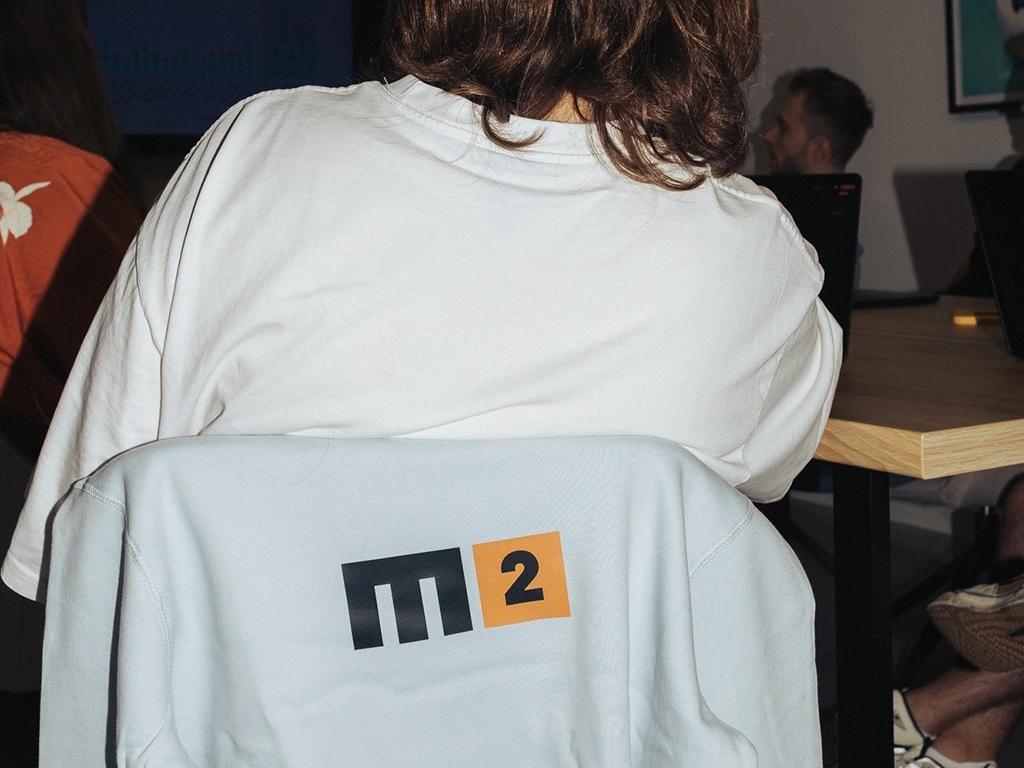Mobile App Development Life Cycle: 6 Stages & Process Flow
Table of Contents
The journey from an idea to a fully functional mobile app is a complex process involving multiple stages. Each stage plays a crucial role in ensuring the app's success. In this guide, we'll explore the 6 phases of the mobile app development process, discuss best practices, and provide tips for navigating this journey effectively.
6 Stages of the Mobile App Development Process Explained
Understanding the mobile app development process is crucial for turning your idea into a successful product. This section breaks down each phase of the process, from initial brainstorming to post-launch maintenance. By following these stages, you'll gain clarity on the steps involved, making the process smoother and more manageable. Let’s dive into each stage and explore how they contribute to building a robust and user-friendly mobile app.
Stage 1. Ideation — Sparking and Shaping Your App Idea
Ideation is where your app journey begins. This stage is all about creativity and exploration, where you generate and shape the core idea of your app. The focus here is on brainstorming potential solutions, conducting basic market research to ensure your idea fills a gap, and defining the app’s unique value proposition. At this stage, the goal is to create a clear vision of what your app aims to achieve and who it’s designed for.
Key focus areas:
💡 Brainstorming. Generate innovative ideas and solutions.
🔍 Basic market research. Identify a market need and potential audience.
👓 Vision development. Define the app’s core purpose and value.
”If you're seeking inspiration for your new venture, check out the best micro-SaaS ideas for 2024.
12 Best Micro-Saas Ideas to Build in 2024 + Startup Examples
Stage 2. Product Discovery — Validating and Refining Your Idea
Product Discovery is where your initial idea is rigorously tested and refined. This stage involves taking the time to think deeply about what you want from the app. Conduct a SWOT analysis to evaluate the app’s potential and outline its core functionality, unique selling points (USPs), and primary goals. This process helps conceptualize a clear vision for the app’s purpose and direction.
”Do not hesitate to verify the app ideas with someone close to you - pitching it, meaning presenting it to someone else, is a great solution to find mistakes in your chain of thought or develop new features for the app, as well as get the idea validation you need.
As part of this stage, ask key questions: Who is the target audience? What market analysis supports the potential user base? How will the app help users achieve their goals? Which platforms — Android, iOS, or both — will it be released on?
Additionally, this is the time to compile a comprehensive business plan. Consider how the app will generate revenue and how it fits into your broader business objectives. Don’t rush through this — depending on the complexity of your app, this stage can take anywhere from a few days to several months.
Key focus areas:
🕵️♂️ In-depth research. Validate the idea through customer insights and competitor analysis.
📋 Feature prioritization. Determine which features are essential for the final product.
🤔 Strategic planning. Develop a detailed plan that aligns with market demands and business objectives.
Product Discovery - Where The New Product Development Process Starts
Stage 3. Product Design — Let’s Get Into Details
Product Design is a critical phase focused on creating a seamless and intuitive user experience (UX) and a visually appealing user interface (UI).
UX Design is all about ensuring users have a comfortable and enjoyable experience with your app. This involves creating wireframes, which are basic, black-and-white layouts that map out the app’s structure, and user journey maps, which outline the steps users take to achieve their goals within the app.
UI Design focuses on how users interact with the app visually. This includes designing the layout, choosing color palettes, typography, icons, and positioning buttons strategically. A well-designed UI is crucial for making the app easy to use and aesthetically pleasing.
Given the complexity of the app and the size of the team, Product Design can take anywhere from 3 weeks to 2-3 months. This stage is not just about making the app look good — it’s about ensuring it works well for users.
Key focus areas:
🌐 UX Design. Develop wireframes and user journey maps to ensure a smooth, enjoyable experience for users.
🎨 UI Design. Create an engaging interface by designing the visual aspects of the app, including color schemes, typography, and icons.
🛠️ Design tools. For detailed and collaborative design work, utilize tools like Sketch, Adobe XD, or Figma.
🔊 Interactive elements. Consider all interaction methods, including voice, sounds, haptics, and movement for AR/VR.
Stage 4. Development — Bringing Your Idea to Life
The development stage is where your app transitions from concept to reality. This phase begins with defining the Minimum Viable Product (MVP), which includes only the essential features needed to launch the app.
Your development team typically includes back-end developers, who handle server-side logic, and mobile developers focused on the app itself. Depending on your project, you might also need front-end developers, DevOps engineers, or data analysts.
Cross-platform technologies like React Native are highly beneficial in the development process. They allow you to build both Android and iOS apps using a single codebase, which is recommended for efficiency.
Development generally takes a few months to a year. If it’s taking longer, you might need to reassess your MVP or the resources available to your team.
Key focus areas:
🖥️ Front-end development. Code the client-side interface, ensuring responsiveness and functionality across devices.
🔗 Back-end development: Build robust server-side infrastructure to manage data, security, and app functionality.
🚀 Agile development: Implement agile methods for iterative progress, continuous feedback, and rapid issue resolution.
🔄 Cross-platform development: Leverage technologies like React Native to efficiently build both Android and iOS apps.
Stage 5. Testing — Perfecting Your Product for the Market
Testing is an essential stage in app development that ensures your app is polished, functional, and ready for launch. This phase involves a mix of automated and manual testing to thoroughly evaluate every aspect of your app, catching potential issues before they reach the user.
”A detailed reviewing process is strongly required while building a complex app - it helps to keep the flow of the development process and helps app developers fix any errors quicker.
Automated testing is used early in the development process to verify that all components work correctly as the code is being written. It’s efficient and helps identify problems quickly, but it may miss subtle issues that only real-world scenarios can reveal.
This is where manual testing becomes crucial. Manual testers go through the app feature by feature, ensuring everything works as intended across different devices, operating systems, and screen sizes. Real-device testing is particularly important for mobile apps, as each device has unique characteristics that can affect performance.
In addition to these tests, beta testing is conducted with real users who provide feedback on the app’s usability and overall experience. This stage is invaluable for fine-tuning the app based on actual user interaction. Beta testing typically takes several weeks to a few months, allowing developers to make necessary adjustments before the official launch.
The performance testing services are also critical, ensuring the app can handle various conditions, such as high traffic or low bandwidth. Finally, security testing identifies potential vulnerabilities, safeguarding user data and ensuring compliance with privacy standards.
Key focus areas:
🤖 Automated testing. Efficient early-stage testing for functionality.
👌 Manual testing. Thorough feature checks across different devices.
📱 Real-device testing. Ensures app performance on various devices.
🧑🔬 Beta testing. User feedback to refine the app pre-launch.
🚦 Performance & security testing. Validates app reliability and safety under different conditions.
Stage 6. Deployment — Smart Planning for a Successful Launch
Deployment is the final step before your app goes live, and planning this stage smartly is crucial for a successful launch. Start preparing your mobile app marketing strategy several months in advance to build anticipation. Marketing automation tools can help streamline this process.
Consider setting an alpha release date to engage potential users with countdown timers or email campaigns. However, keep in mind the challenges of syncing release times across different app stores due to their varying verification processes.
App store guidelines:
- Android deployment: Publishing on the Google Play Store is typically quick, with apps being reviewed and published within 24 hours after passing Google's anti-piracy checks.
- iOS deployment: The Apple App Store has a more rigorous review process, taking up to two or three weeks as a real person evaluates your app according to Apple’s standards.
Key focus areas:
📅 Release management. Plan the app's launch, including marketing strategies, promotional activities, and user onboarding.
📝 App store compliance. Ensure your app meets all submission guidelines, and prepare essential assets like icons and screenshots.
📊 Final beta testing. Conduct final beta testing to gather feedback and address any last-minute issues.
”If you're curious about the exact timeline for developing an app, check out our comprehensive guide on “How Long Does It Take to Make an App?" This detailed resource breaks down each phase of the process, helping you understand what to expect and how to plan effectively.
How Long Does It Take to Make an App From Scratch in 2024?
Mobile App Development Best Practices
Creating a successful mobile app goes beyond just development — it requires careful planning, attention to detail, and adherence to industry best practices. By following these guidelines, you can ensure your app is user-friendly, secure, and optimized for performance, ultimately leading to a more successful product in the market.
- User-centric design. Design your app with the end-user in mind. A user-centric approach ensures that the app is intuitive, accessible, and meets the needs of your target audience. Regularly conduct user testing and gather feedback to refine the user experience.
- Security first. In an era where data breaches are common, ensuring the security of your app is non-negotiable. Implement encryption for data storage and transmission, use secure APIs, and conduct regular security audits to protect user data.
- Performance optimization. Users expect apps to be fast and responsive. Optimize your app by minimizing load times, reducing the size of images and assets, and ensuring that the code is efficient. Regularly test the app under various conditions to maintain optimal performance.
- Scalability planning. Your app should be able to handle growth without compromising performance. Plan for scalability by choosing a flexible architecture and cloud-based solutions that can expand as your user base grows.
- Agile methodology. Adopting agile practices allows for flexibility in development, enabling you to adapt to changes and incorporate feedback quickly. This approach also helps in delivering a better product by focusing on continuous improvement and iterative development.
- Continuous monitoring and updates. The app development process doesn’t end with the launch. Use the analytics tools to continuously monitor the app’s performance, gather user feedback, and release regular updates to fix bugs, enhance features, and improve security.
- User feedback integration. Actively seek and integrate user feedback into your app’s development cycle. This not only improves the user experience but also fosters a sense of community among your users.
- Cross-platform consistency. Ensure that your app delivers a consistent experience across different platforms (iOS, Android, etc.). This involves maintaining design consistency, performance parity, and feature availability across devices.
- Compliance and legal considerations. Ensure your app complies with relevant laws and regulations, such as data protection (GDPR) and accessibility standards. This will help you avoid legal issues and build trust with your users.
Agile App Development Methodology
Creating a digital product is complex, with each stage closely connected to the others. Adopting an Agile methodology can simplify this process and help ensure success.
”Agile development helps startups and businesses build, launch and manage their products rapidly.
Agile is all about building, launching, and managing products quickly. It emphasizes delivering working software through short, focused cycles called sprints, allowing for rapid changes and continuous improvement.
Agile vs Waterfall
Agile and Waterfall are two different approaches to product development. Agile is iterative, allowing for ongoing changes and improvements throughout the project. In contrast, Waterfall follows a strict, step-by-step process where each phase must be completed before moving to the next.
To make Agile work effectively, having a skilled Product Manager and Scrum Master is key. The Product Manager ensures everything aligns with the strategy, while the Scrum Master keeps the team coordinated. Both roles can be outsourced along with your development team.
Agile also requires the Product Owner to be actively involved. With a clear vision, the owner guides the development team and ensures the final product meets the original goals.
Summary
The mobile app development process involves many factors, but choosing the right development model and a reliable app development company is crucial. It's essential to remember that development time isn't just about the complexity of features or coding. Business-related issues, like poor management, indecision, flawed planning, and a lack of clear vision and success metrics, can turn even the best ideas into failures.
Additionally, as development progresses, making changes becomes more challenging and expensive. This is why a thorough Product Discovery phase is key to a successful mobile app, helping you plan effectively and avoid unnecessary complications later on.
FAQs on the Mobile App Development Process
What is the most important aspect of the conceptualization stage of app development?
The most important aspect of the conceptualization stage of app development is defining the app's core functionality, unique selling points (USPs), and primary goals. This stage involves creating a clear vision for the app's purpose and direction, ensuring that it addresses a specific problem or need in the market. By thoroughly understanding what the app should achieve, who the target audience is, and how it will stand out from competitors, the foundation for a successful development process is established.
The most important aspect of the conceptualization stage of app development is defining the app's core functionality, unique selling points (USPs), and primary goals. This stage involves creating a clear vision for the app's purpose and direction, ensuring that it addresses a specific problem or need in the market. By thoroughly understanding what the app should achieve, who the target audience is, and how it will stand out from competitors, the foundation for a successful development process is established.
Navigating the application development life cycle (ADLC) can be challenging for businesses, but understanding the common obstacles can help you better prepare. Here are some key challenges and strategies to overcome them:
- Scope creep. Uncontrolled changes or additions to project requirements can cause delays and budget overruns. To avoid this, set clear boundaries for the project scope and implement a robust change management process.
- Communication gaps. Miscommunication or a lack of communication can slow progress and create misunderstandings. To prevent this, establish open communication channels and encourage regular interaction among team members and stakeholders.
- Unrealistic expectations. Setting timelines or budgets that are too ambitious can lead to stress and compromised quality. To manage this, align expectations with the project's complexity and scope through thorough planning and realistic estimation.
- Technology challenges. Keeping up with rapidly evolving technologies can be overwhelming. Stay ahead by staying informed about the latest advancements and selecting technologies that support your project's long-term goals.
What is the bug life cycle?
The bug life cycle is the process a software bug goes through, from discovery to resolution. It starts with identifying and logging the bug, detailing its nature and reproduction steps. The bug is then assigned to a developer for investigation and fixing. After the fix, the bug is tested to ensure it's resolved. If the fix works, the bug is closed — if not, it may be reopened for further action. The cycle continues until the bug is completely resolved.
Memory Squared

Trusted by both innovative startups and large international companies.

Awarded as one of the best 2024 software companies globally
What we do
We can cover the whole process and product development life cycle but we’re also open to sending our developers and designers on a mission to join your team. We’re comfortable working closely with business managers to creatively place digital products into their strategy.








